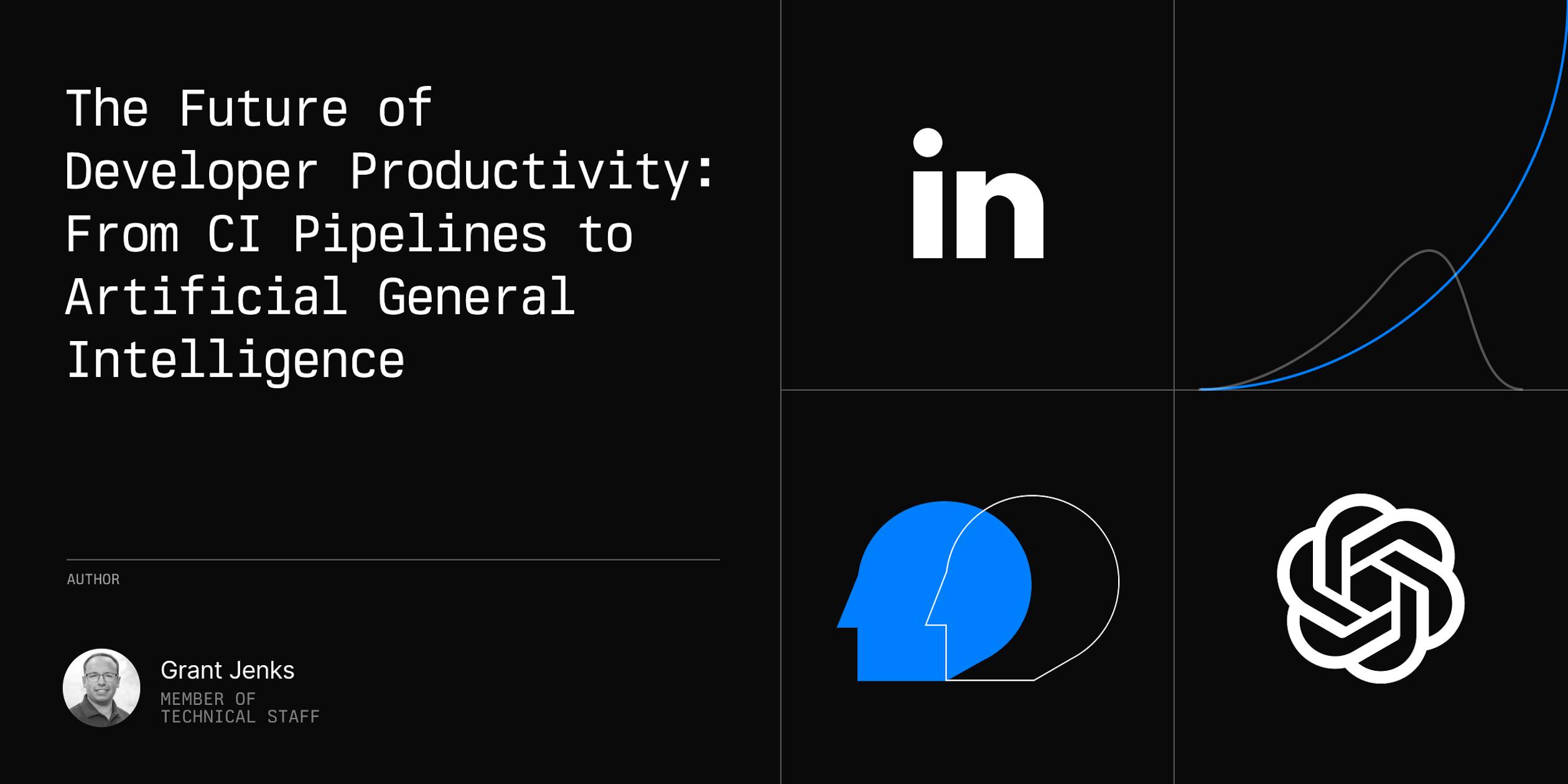My career has taken me through some incredible experiences in developer productivity and analytics, most notably at LinkedIn.
During my time there, I was dedicated to improving developer happiness, which I believed was crucial to making engineers more productive. I spent five years working with my team to design systems and metrics that accelerated engineering velocity, making the development pipeline smoother and more efficient. From improving code reviews to optimizing CI pipelines, we built the tools to make developers’ work easier and more enjoyable.
Now, I’m transitioning into an entirely new realm—one that involves artificial general intelligence (AGI). I joined OpenAI’s growth team, focusing on bringing AI to everyone across the globe. This is a massive shift from my previous role, but in many ways, it still aligns with my passion for enhancing productivity. My journey from improving developer workflows to working with AGI reflects the broader technological changes happening today—where productivity tools aren’t just limited to developers but are expanding to impact the everyday lives of people around the world.
TL;DR
Developer happiness is correlating sentiment with productivity
Balancing analytics and sentiment to drive productivity
Challenges of large-scale engineering teams and productivity tools
Developer Happiness: What It Really Means
At LinkedIn, we focused on more than just the efficiency of the code pipeline—we cared about the developer experience. One of the most unique aspects of my role was working on developer happiness. This wasn’t just a feel-good initiative; we genuinely believed that happier developers would produce better work.
But how do you measure something as subjective as happiness? We created complex systems that combined telemetry data from internal tools with sentiment surveys. The idea was to capture how developers felt while also tracking how efficient their tools were. The outcome was a CSAT (customer satisfaction) score that represented a quantitative view of happiness.
The belief was that happy developers are productive developers. But it's not always true—sometimes external factors like stock prices affect happiness more than any tool could.
Interestingly, there were instances where productivity increased, but happiness didn’t. A good example? During crisis periods where leadership pushed developers harder, productivity metrics showed an uptick, but sentiment plummeted. The takeaway: while happy developers are generally more productive, there are exceptions, and understanding these nuances is key to improving both.
Quantitative vs. Qualitative Data: Finding the Balance
A common pitfall is focusing too much on quantitative data—build times, CI failures, etc.—without considering how developers feel about the tools they use. A classic example involved frontend engineers complaining about 7-second build times while mobile engineers were fine with hour-long builds. The quantitative data showed no issues, but the qualitative feedback from developers told a different story. This underscores the importance of balancing both analytics and sentiment to gain a true understanding of what improves productivity.
Engineering at Scale: Why Productivity Tools Matter More Than Ever
As engineering teams grow, developer productivity tools become increasingly critical. At LinkedIn, we had thousands of engineers, and if our CI system went down, the entire company was effectively halted. The stakes get higher as organizations scale—tools that seem minor for smaller teams become critical infrastructure when you’re dealing with thousands of developers.
When I was in charge of CI at LinkedIn, a CI outage was a company-wide code red. We couldn’t deploy features to users, and that directly impacted our business.
In large organizations, a significant portion of the engineering workforce ends up working on developer productivity or infrastructure, sometimes making up to 50% of the team. As the article "Let a Thousand Flowers Bloom and Rip Them Out by the Roots" suggests, the larger the organization, the more focus it needs to put on productivity tools.
OpenAI: The Future of AGI and Growth
Joining OpenAI represents a new frontier for me, one that focuses on bringing AGI to all of humanity. When I started using ChatGPT and GPT-4, it felt like the greatest productivity tool I had ever encountered. Whether it was helping me with taxes, fixing code, or even writing scripts in languages I didn’t fully understand, it felt like the ultimate Swiss Army knife for productivity.
I haven’t seen something like this before. It’s a generic intelligence tool—a productivity booster like no other.
AI tools like ChatGPT not just as an aid for developers but as something that could transform the way people work across industries. It’s like a compiler that doesn’t just generate code, but helps you achieve your goal, whether that’s solving a problem or building something new. As we move towards a future where AGI becomes more mainstream, I believe we’ll see even more revolutionary productivity tools emerging from this space.
Key Points
Developer productivity and happiness are critical but complex areas that don’t always correlate.
Metrics design plays a huge role in accurately understanding productivity and sentiment.
At scale, developer productivity tools become more vital to an organization's success.
The future of AGI is rooted in expanding its accessibility to all of humanity, with tools like ChatGPT transforming how we work.
Note
The views and experiences shared here are reflective of my personal journey at LinkedIn and my role at OpenAI.










